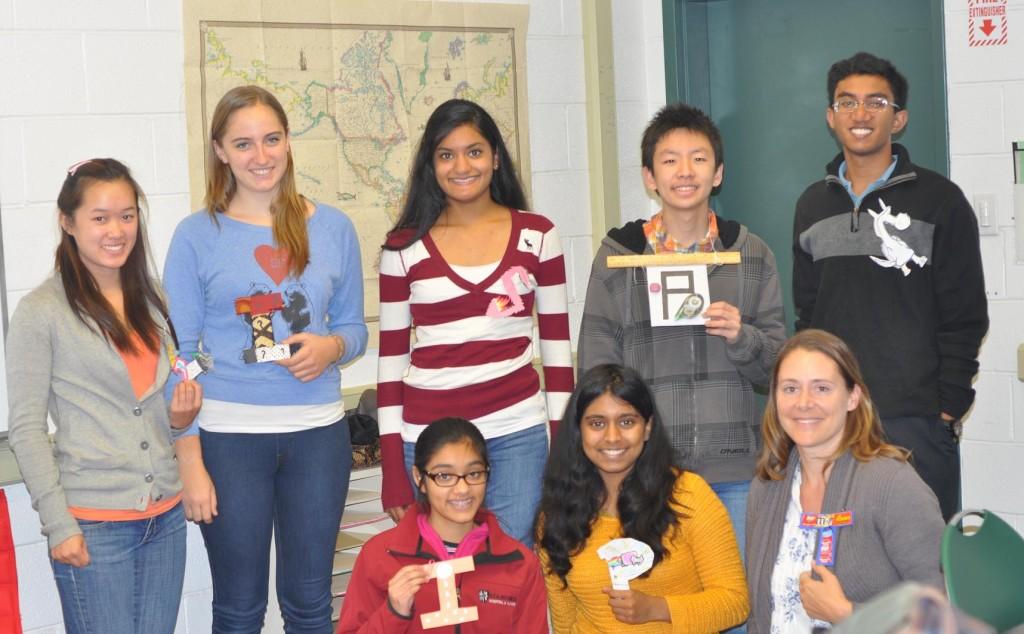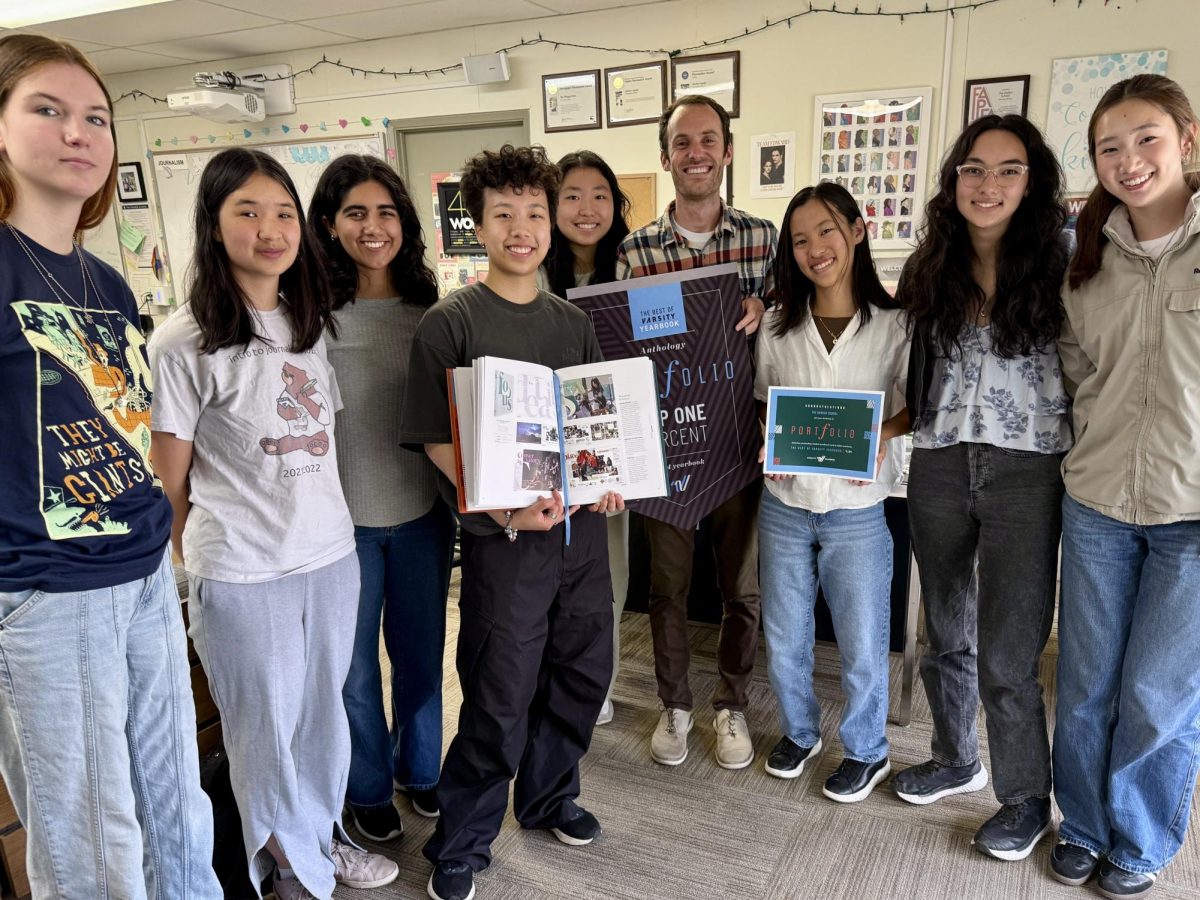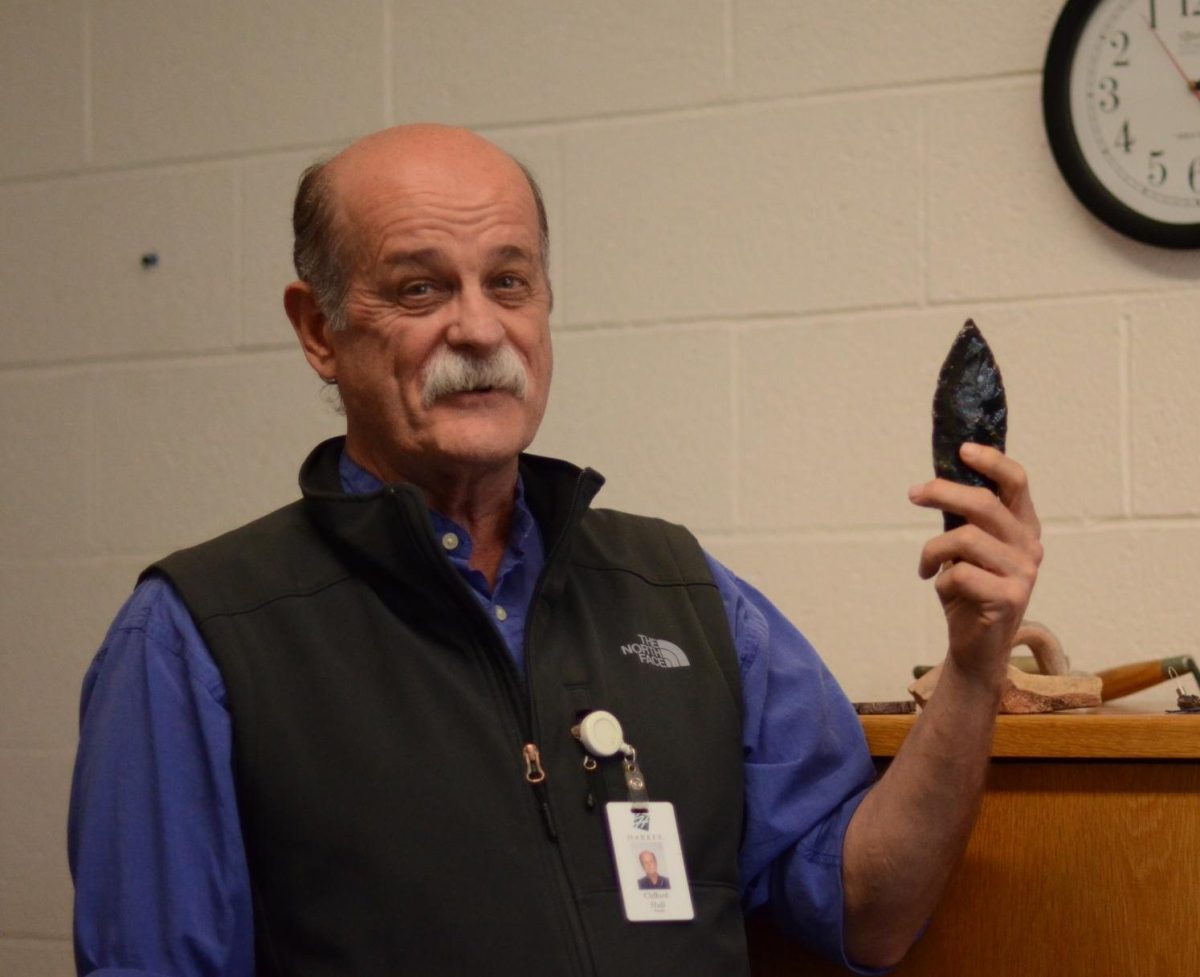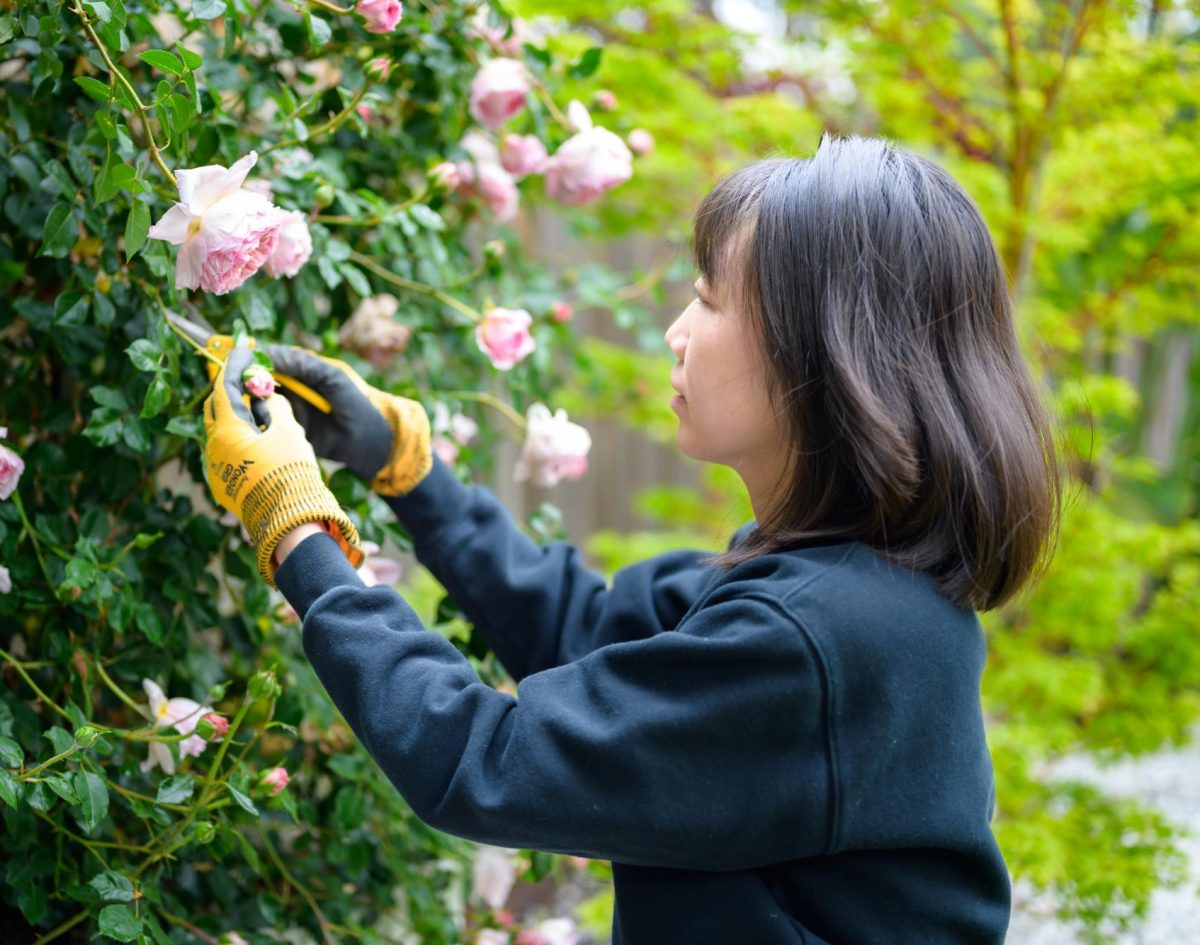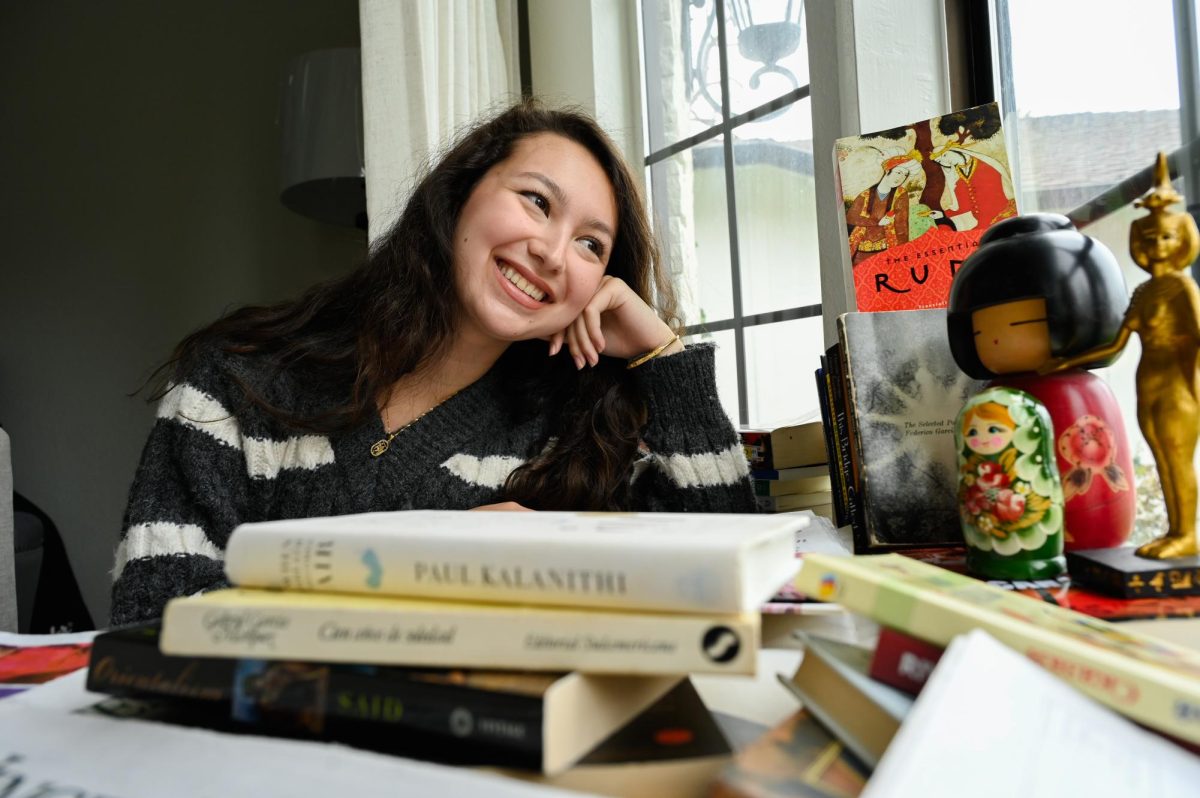Walking through the halls with various letters pinned to their clothing, juniors in Tia Barth’s Honors American Literature class emulated the main character of Nathanial Hawthorne’s The Scarlet Letter by displaying a personal flaw on their chest.
In Hawthorne’s novel, protagonist Hester Prynne must wear a scarlet ‘A’ for adultery on her clothing to publicize her sin to the rest of the townspeople. In the 17th century Puritan town setting, Hester’s scarlet letter is a source of shame and the cause of her isolation.
Students in Barth’s classes crafted their own letter to represent a negative aspect of themselves, using different fabrics, drawings, and materials to decorate it according to the trait. Examples included an ‘E’ for “ego” crafted from reflective material to look like a mirror, an ‘I’ for “indecisive” with question marks covering the letter, and a mule drawn in the shape of an ‘S’ for “stubborn.”
Barth originally conceived the idea from a Los Altos High School student she tutored a few years ago; the project was an assignment for his English class, and the idea intrigued her.
“The goal was two-fold,” she said in an email response. “First, to get the students to think about how shape, font, color, material and other visual elements can work symbolically to convey an idea. Second, to encourage students to consider how meaning is assigned to or layered upon a symbol, both by the creator of the symbol and by those who encounter it.”
The juniors wore their letters for two days; on the first day, they were not allowed to tell others what it stood for, but on the second day they could reveal the meaning. In addition, after two days, they wrote a paragraph reflecting on their experiences.
“I thought it was really interesting, especially the fact that we didn’t tell what the letter stood for on the first day, so they had to kind of guess your letter based on what they know about you,” Zareen Choudhury (11) said.
Although the students’ letters did not cause their peers to scorn or isolate them as it did in Hester Prynne’s case, they drew curiosity from those in other grades and classes.
“A lot of people asked what it stood for, but there were a lot of other people wearing it too, so it was kind of like a game,” Monica Kumaran (11) said.
Barth felt that the activity was moderately successful in allowing students to explore the deeper meanings in illustration of symbols.
“Many students were thoughtful and specific in choosing visual detail to convey their ideas, and many did find that other people created meanings of their own for the letter the student wore,” she said in an email response.
Although Barth did not intend to elicit a strong emotional response from her students, she thought that many of them partially felt the self-consciousness expressed by Hester throughout the novel.


















![“[Building nerf blasters] became this outlet of creativity for me that hasn't been matched by anything else. The process [of] making a build complete to your desire is such a painstakingly difficult process, but I've had to learn from [the skills needed from] soldering to proper painting. There's so many different options for everything, if you think about it, it exists. The best part is [that] if it doesn't exist, you can build it yourself," Ishaan Parate said.](https://harkeraquila.com/wp-content/uploads/2022/08/DSC_8149-900x604.jpg)




![“When I came into high school, I was ready to be a follower. But DECA was a game changer for me. It helped me overcome my fear of public speaking, and it's played such a major role in who I've become today. To be able to successfully lead a chapter of 150 students, an officer team and be one of the upperclassmen I once really admired is something I'm [really] proud of,” Anvitha Tummala ('21) said.](https://harkeraquila.com/wp-content/uploads/2021/07/Screen-Shot-2021-07-25-at-9.50.05-AM-900x594.png)







![“I think getting up in the morning and having a sense of purpose [is exciting]. I think without a certain amount of drive, life is kind of obsolete and mundane, and I think having that every single day is what makes each day unique and kind of makes life exciting,” Neymika Jain (12) said.](https://harkeraquila.com/wp-content/uploads/2017/06/Screen-Shot-2017-06-03-at-4.54.16-PM.png)








![“My slogan is ‘slow feet, don’t eat, and I’m hungry.’ You need to run fast to get where you are–you aren't going to get those championships if you aren't fast,” Angel Cervantes (12) said. “I want to do well in school on my tests and in track and win championships for my team. I live by that, [and] I can do that anywhere: in the classroom or on the field.”](https://harkeraquila.com/wp-content/uploads/2018/06/DSC5146-900x601.jpg)
![“[Volleyball has] taught me how to fall correctly, and another thing it taught is that you don’t have to be the best at something to be good at it. If you just hit the ball in a smart way, then it still scores points and you’re good at it. You could be a background player and still make a much bigger impact on the team than you would think,” Anya Gert (’20) said.](https://harkeraquila.com/wp-content/uploads/2020/06/AnnaGert_JinTuan_HoHPhotoEdited-600x900.jpeg)

![“I'm not nearly there yet, but [my confidence has] definitely been getting better since I was pretty shy and timid coming into Harker my freshman year. I know that there's a lot of people that are really confident in what they do, and I really admire them. Everyone's so driven and that has really pushed me to kind of try to find my own place in high school and be more confident,” Alyssa Huang (’20) said.](https://harkeraquila.com/wp-content/uploads/2020/06/AlyssaHuang_EmilyChen_HoHPhoto-900x749.jpeg)



